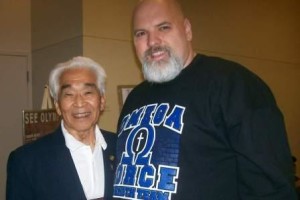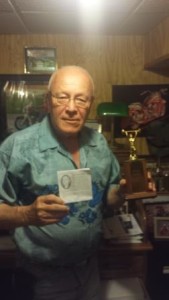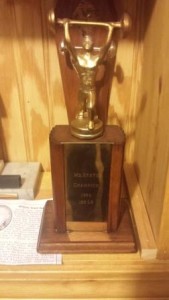Tommy Kono: A True All-Rounder
by Thom Van Vleck
When I was a kid I had my Uncle Wayne who was a “Paul Anderson Fan”. He was all about strength and nothing about aesthetics. Function first, looks second. And Function was Olympic lifting! My other Uncle, Phil, was much more at aesthetics but he also liked strength and he was a Bill Pearl fan. The one guy they could both agree on was Tommy Kono!
Anyone that is involved in strength sports should know by now that Tommy recently passed away at the age of 85 after one of the most storied careers in strength history. I did a story on Tommy a few years back and I’m going to say a few things here but you would need to large book to really do Tommy justice!
Tommy is famous for living in Hawaii but he was actually born in Sacramento, California and was relocated to the Tule Lake Internment Camp as a teenager during WWII due to the fear people had against those of Japaneses decent. While this was a miserable experience in some ways it was the best thing to happen to Tommy. During his stay the desert air helped clear up his asthma which had made him sickly. He also got involved in weight training which obviously changed his whole life.
In 1950 Tommy was drafted into the army. They realized his Olympic potential and gave him the opportunity to train. Tommy worked hard and this all began to pay off in 1952 when he won the gold medal in Olympic lifting in Helsinki, Finland. This was followed by dozens of World and National records and titles. He was again Olympic champion in the 1956 Melbourne Olympics (when Paul Anderson famously won his gold) and the won Silver in the 1960 Olympics in Rome. He kicked in 6 world championships and 3 Pan Am Golds to boot. So he had the functional strength my Uncle Wayne appreciated.
Tommy also was a champion bodybuilder. I don’t mean he looked good and did well against the best of the day. I mean he was a 4 time Mr. Universe! This was in the same years he was competing as a lifter as well. So he had the aesthetics my Uncle Phil appreciated.
Tommy was also just as great a coach as lifter. He coached three separate nations in three different Olympics. He was elected to numerous Hall’s of Fame but what I recall that was most striking was being named “Weightlifter of the Century”. Tommy deserved this and here’s why.
While other lifters may have won more world titles or broke more records there there three factors that made him the best. First, he was undefeated from 1952 to 1960 on the world stage. Second, his 26 world records were an amazing accomplishment. Third, these were set almost equally in the three lifts contested in the day. He was the best at all of them and not a specialist. Fourth, and maybe most amazing, was he competed and set records in 4 different weight classes.
Maybe most important of all was Tommy was just a great person. My Uncles met him in the 60’s while he was still lifting. They told me he was a happy guy who offered advice and really listened to them when they asked him questions and gave them well thought out answers. I found this out for myself in 2009 when I met him at the Arnold Fit Expo. I stopped him in the hallway and introduced myself. He stopped, talked at length, and made me fell like I was a good friend. He was famous for helping others and never asking for a dime in return.
So I say Tommy all-rounder because he was the best at all the lifts, the best physique, the best coach, the best photographer of his era, and one of the best authors! He also was just a great human being who would have been a great friend to have even if he had never picked up a weight in his lift. So here’s to Tommy Kono. The best!


